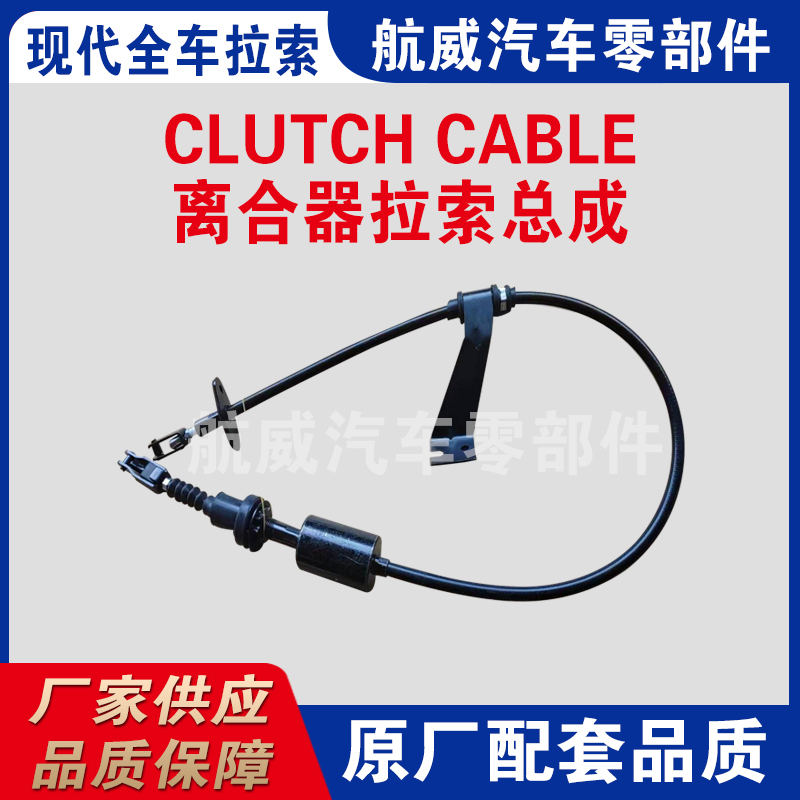clutch slave cylinder hydraulic line
Understanding the Clutch Slave Cylinder and Hydraulic Line
The clutch system in a vehicle is crucial for managing the power transmission from the engine to the wheels. Among the key components of this system is the clutch slave cylinder, which works intimately with the hydraulic line to ensure smooth gear shifting. Understanding the functionality of the clutch slave cylinder and its hydraulic line is essential for both car enthusiasts and everyday drivers.
What is a Clutch Slave Cylinder?
The clutch slave cylinder is a hydraulic actuator that plays a vital role in the clutch mechanism of manual transmission vehicles. It is usually located on the transmission housing and is responsible for engaging and disengaging the clutch. When the driver presses the clutch pedal, hydraulic fluid is transmitted from the master cylinder to the slave cylinder via the hydraulic line. This fluid movement causes the slave cylinder to push a rod or fork, disengaging the clutch. As a result, the driver can shift gears without damaging the transmission.
The Importance of Hydraulic Lines
Hydraulic lines are crucial in the operation of the clutch system. These are typically made from flexible rubber or metal and are designed to withstand high pressure while transporting hydraulic fluid. The quality and integrity of the hydraulic line can greatly influence the performance of the clutch system. A leak in the hydraulic line can lead to a decrease in hydraulic pressure, making it difficult or impossible to disengage the clutch. This could result in grinding gears or difficulty in shifting, which can lead to more severe mechanical issues.
Signs of Trouble with the Clutch Slave Cylinder and Hydraulic Line
As with any component of a vehicle, wear and tear can occur over time. Drivers should be aware of several signs that might indicate issues with the clutch slave cylinder or the hydraulic line
1. Difficulty Shifting Gears If you find it increasingly challenging to shift gears, especially if the vehicle is grinding, this may indicate a problem with the clutch disengagement.
clutch slave cylinder hydraulic line

3. Fluid Leaks If you notice a puddle of hydraulic fluid under your vehicle, it could be coming from a damaged slave cylinder or hydraulic line.
4. No Resistance If the clutch pedal offers no resistance when pressed, this usually signals a failure within the hydraulic system, possibly involving the slave cylinder or the hydraulic line.
5. Unusual Noises Grinding or whining noises when attempting to shift gears can signal a problem with the engagement of the clutch, potentially linked to the slave cylinder.
Maintenance and Replacement
Routine maintenance is essential to prolonging the life of your vehicle's clutch system. Regular checks of the hydraulic fluid level and the condition of the hydraulic lines can help catch issues before they escalate. If any signs of wear, leaks, or performance issues are detected, immediate attention is recommended.
When to Seek Professional Help
While some vehicle enthusiasts might be comfortable tackling minor issues related to the clutch slave cylinder and hydraulic lines, it’s important to know your limits. Diagnosing and repairing hydraulic systems can be complex and often requires specialized tools and knowledge. If you encounter persistent issues with your clutch system, seeking help from a qualified mechanic is advisable.
Conclusion
The clutch slave cylinder and hydraulic line are integral components of a manual vehicle’s clutch system. Understanding their roles can enhance your automotive knowledge and help you maintain your vehicle more effectively. Pay attention to your vehicle's shifting behavior and be proactive about maintenance to ensure a smooth and safe driving experience. Whether you're a seasoned driver or a novice, recognizing the signs of potential issues can save time and money in the long run, ensuring the longevity of your vehicle's clutch system.
-
Upgrade Your Control with Premium Throttle CablesNewsAug.08,2025
-
Stay in Control with Premium Hand Brake CablesNewsAug.08,2025
-
Experience Unmatched Performance with Our Clutch HosesNewsAug.08,2025
-
Ensure Safety and Reliability with Premium Handbrake CablesNewsAug.08,2025
-
Enhance Your Vehicle with High-Performance Clutch LinesNewsAug.08,2025
-
Elevate Your Ride with Premium Gear CablesNewsAug.08,2025
